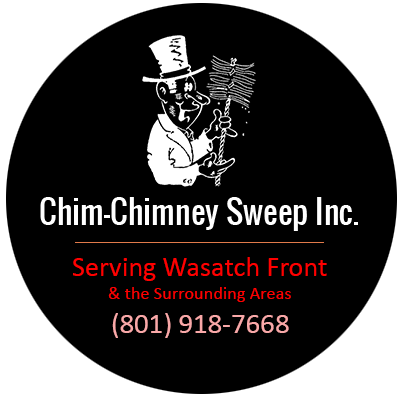Wasatch Front & Surrounding Areas
21 Point Fireplace and Chimney Inspection

This is our comprehensive chimney inspection process, where we meticulously assess your chimney's condition through 21 crucial inspection points across three categories. Below is a detailed breakdown of each point, providing you with an in-depth understanding of our thorough examination.
Our commitment is to provide you with a comprehensive understanding of your chimney's condition, ensuring safety, functionality, and peace of mind.
Chimney
1. Chimney Height
Ensuring the proper draw of fire smoke from your chimney is crucial. A specific formula dictates the baseline height for chimney construction, with certain conditions requiring an elevation beyond the baseline. Our skilled technicians are adept at determining the optimal height for your chimney.
2. Chimney Cap / Spark Arrestor
The chimney cap, or rain cap, serves to keep rain and animals out of the chimney. Proper screening in the cap prevents animal entry. Maintaining a secure, well-sized, and firmly attached chimney cap is essential for preventing costly repairs and unwelcome guests. See our page dedicated to explaining why you need a Chimney Cap
3. Crown / Wash
The chimney crown seals off the top, shielding it from rain and snow. Regular inspection by experienced masons is vital, as cracks in the crown can occur. If issues arise, sealing with Tamoseal may be sufficient; otherwise, a new crown may be required.
4. Brickwork / Mortar
Examining the condition of bricks, blocks, or stone work and the mortar is crucial. Waterproofing with siloxane can prevent saturation during heavy rains, avoiding issues like "frost wedging" and "spalling." Tuckpointing or a partial or full chimney rebuild may be necessary based on the condition.
5. Flashing
Chimney flashing, the metal near the roof's base, prevents water from entering the house. Damaged or missing flashing can lead to significant interior damage. Timely repair or replacement is essential to avoid costly repercussions.
6. Flue Liner
A chimney flue liner provides an extra layer of protection. Older chimneys without liners can be upgraded with flexible stainless steel liners. Our visual inspection or video scoping ensures immediate defect detection and appropriate measures.
7. Moisture Resistance
Identifying and rectifying moisture resistance issues is critical. Whether it's a missing rain cap, deteriorated mortar joints, or issues with stucco work, addressing these concerns prevents structural damage over time.
Fireplace
8. Smoke Chamber
The smoke chamber plays a vital role in facilitating the upward movement of smoke. Regular cleaning with a chamber brush is essential to prevent creosote deposits. Inspection detects any cracks, and re-coating with high-temperature mortar ensures optimal functionality.
9. Damper
A functioning fireplace damper prevents heat loss up the chimney when not in use. Regular inspection ensures dampers are in good condition, avoiding rust-related malfunctions due to prolonged exposure to the elements.
10. Firebox and Grate
The firebox, constructed with high-temperature fire brick and refractory mortar, requires inspection for proper construction. Adequate grates assist in airflow and protect the firebox floor. Replacement or repair is advised for worn or missing components.
11. Ash Container
Some fireplaces have ash containers or drawers, requiring regular cleaning. A worn or missing clean-out door poses a fire hazard and must be promptly replaced.
12. Spark Screen / Doors
Spark screens and glass doors prevent sparks from escaping. Choosing quality doors, like Pleasant Hearth, ensures safety and ease of maintenance.
13. Tools / Gloves
A sturdy fireplace tool set and high-quality leather gloves are essential for safe and efficient fireplace use.
14. Hearth Protection
Ensuring adequate non-combustible material around the fireplace is crucial. Compliance with manufacturer and local building code specifications is necessary.
15. Miscellaneous
Tailored to individual needs, this aspect of the inspection addresses unique customer requirements.
Stove or Fireplace Insert
16. Stovepipe Condition (Woodstove)
Regular inspection of stovepipes, whether black or stainless steel, is necessary. Rust, wear, and thinning can occur over time and require attention.
17. NFPA Approved Flue Connection
Adhering to NFPA-approved flue connections is critical for safety, with various options available for compliance.
18. Installation / Thimble / Clearances
Proper installation, thimble use, and clearance adherence for stoves are key points in ensuring safety and compliance with regulations.
Other Safety
19. Fire Extinguisher / Smoke Detectors / Carbon Monoxide Detectors
Strategically placed fire extinguishers, smoke detectors, and carbon monoxide detectors contribute to overall safety. Regular inspections and maintenance of these items are emphasized during the chimney inspection.
20. Gas / Oil Furnace Flue Liner
Addressing the flue liner in chimneys venting gas or oil furnaces is essential. Installation or retrofitting with a suitable liner ensures optimal performance.
21. Fire Escape Plan
A crucial element not directly related to the chimney, the fire escape plan emphasizes safety, especially with children in the household. The inspection prompts awareness and adherence to a well-practiced escape plan in case of a fire emergency.





 Follow
Follow

